For this week I worked on building the hulls of my boat, going down the composites track.
I decided to take the approach of making the hulls out of foam, which is extremely light and buoyant (about 0.05 g / cm3, compared to 1 g / cm3 for water), and coat them with a fiberglass layer to ensure structural hardness/protection on the outside.
Foam alone would degrade with time, sagging or deforming slightly. Fiberglass alone (with no foam) would be prone to cracks that would fill the hull with water and cause the boat to sink.
Having both means a degree of hardness + the hulls are filled in the event of fiberglass cracks, so water can't get inside since foam occupies the whole space.
I started off with a simple foam board. I was aiming for the total buoyancy of both hulls to be 30 kilograms (excluding the weight of the boat/hulls). I don't think the total boat weight, with the current components, will exceed 10 kilograms, but this will make it amenable to integrations such as larger batteries, solar panels, sensors etc. in the future.
Assuming that the hull is a diamond, with major length l, minor length w, and height h, we can say the volume is l * w * h.
To achieve 30,000 cm^3, I planned to make the hulls about 86 centimers long, 22 centimers wide, and height of 20 centimers (about 4 foam boards). Of course, the hull is curved, not an exact diamond.
The foam board used can be shown below, it was obtained from home depot.
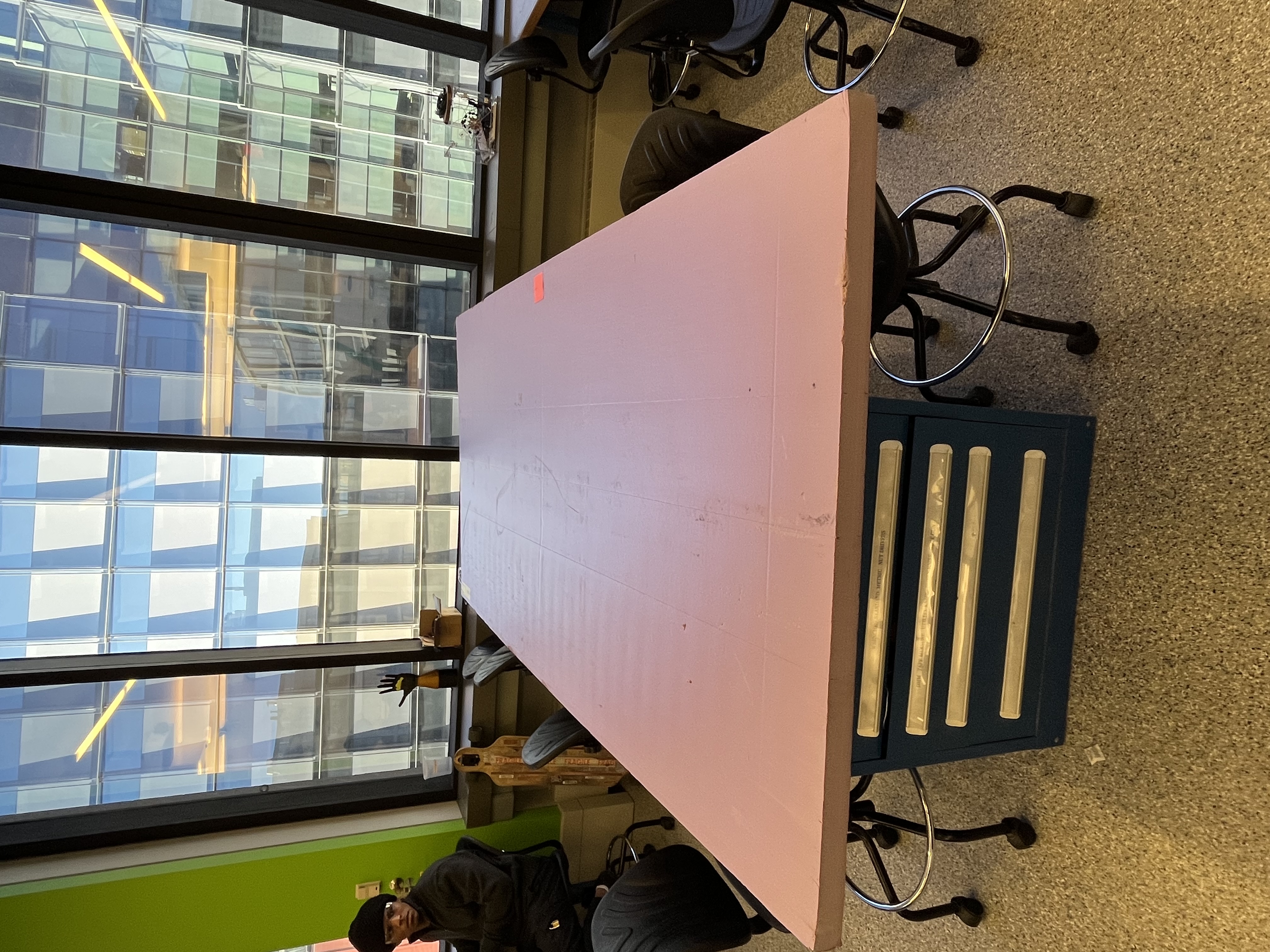
Using rulers to measure width/length, and balsa wood sticks to capture the curvature, I shaped out my two hulls.
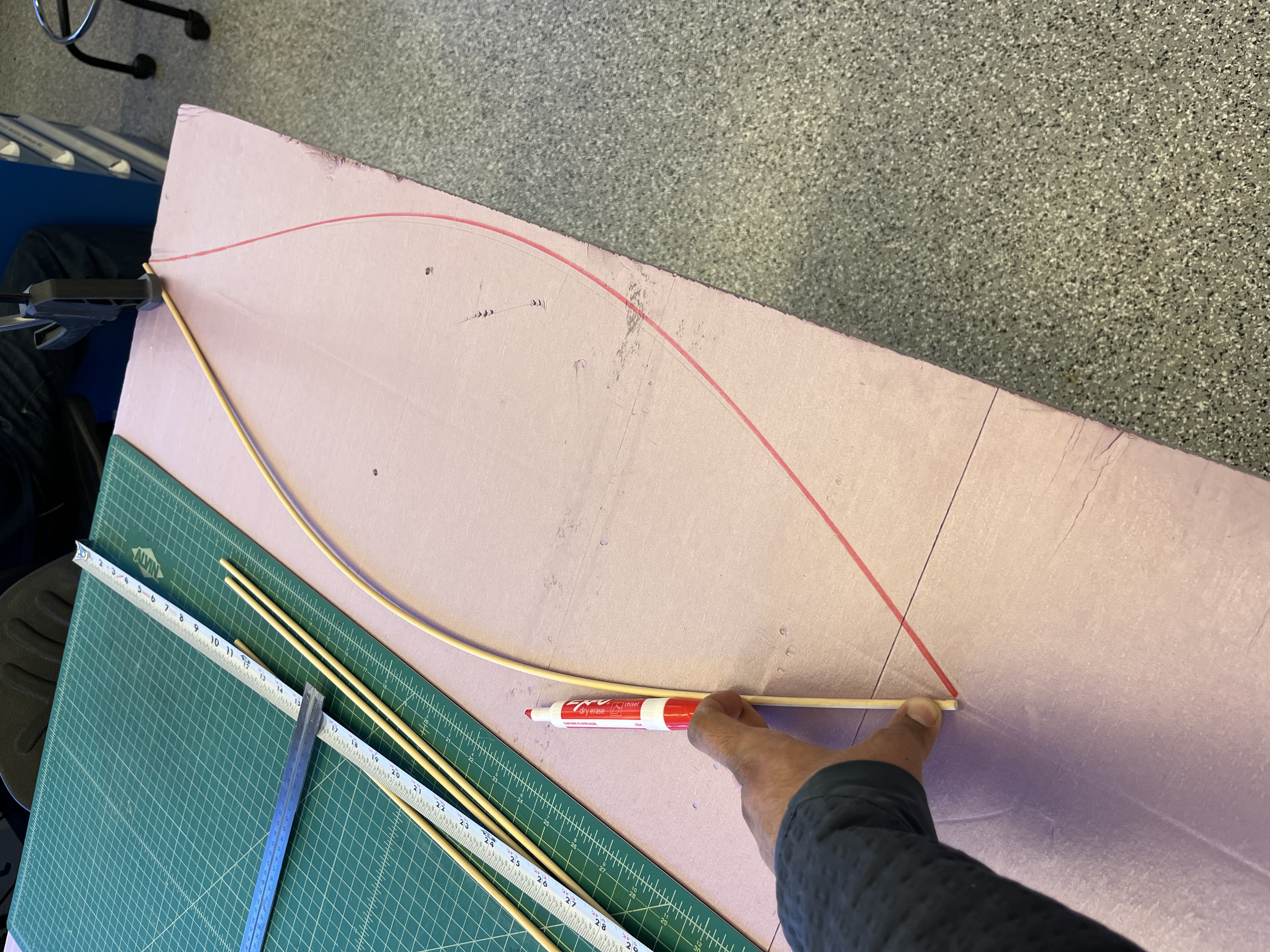

I then cut these hulls, and repeated the process for 4 more, using these hulls as measuring tools.
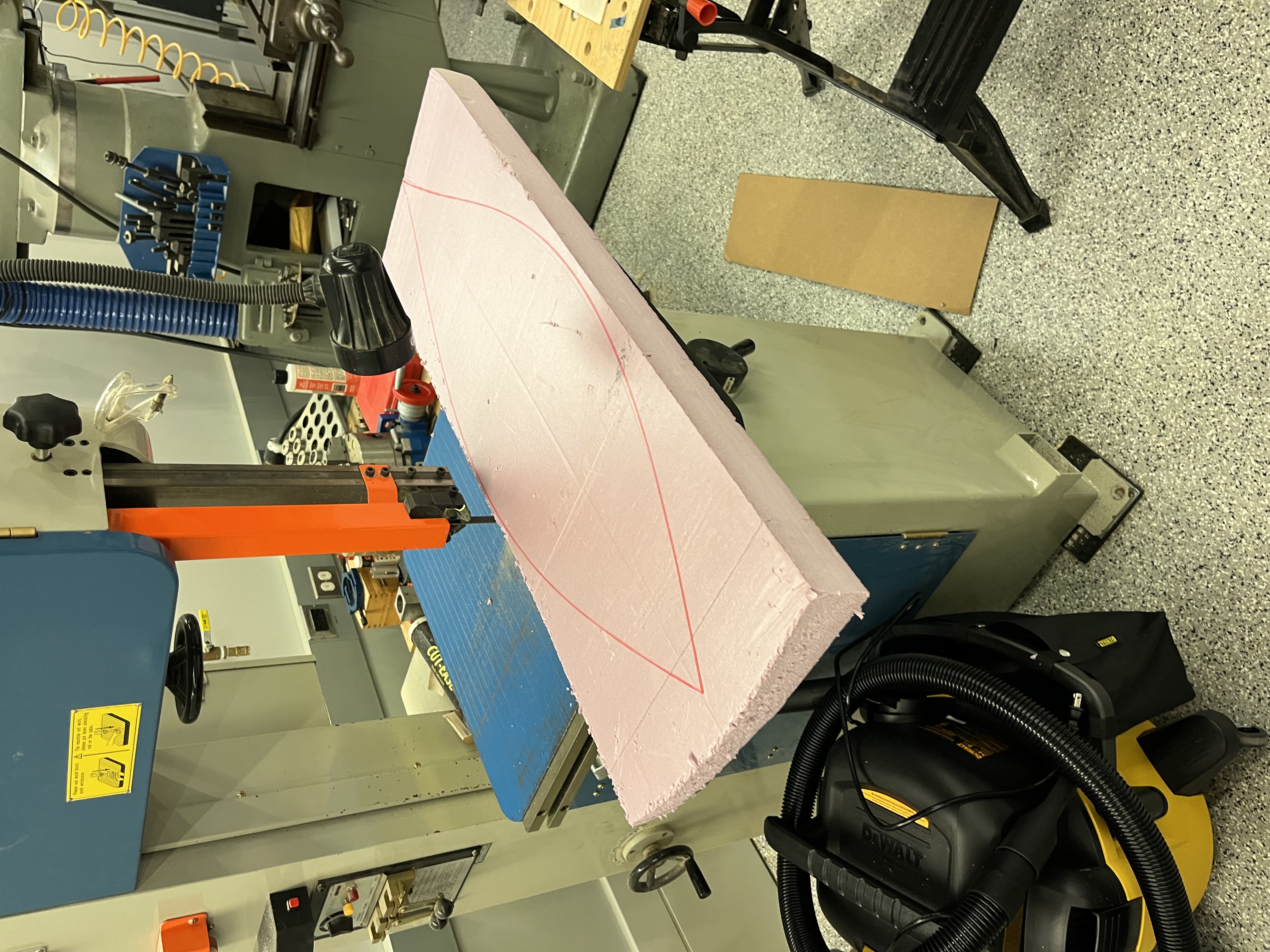
After this I glued the pieces, clamped them to cure overnight, and retrived them. They were very robust and strong!

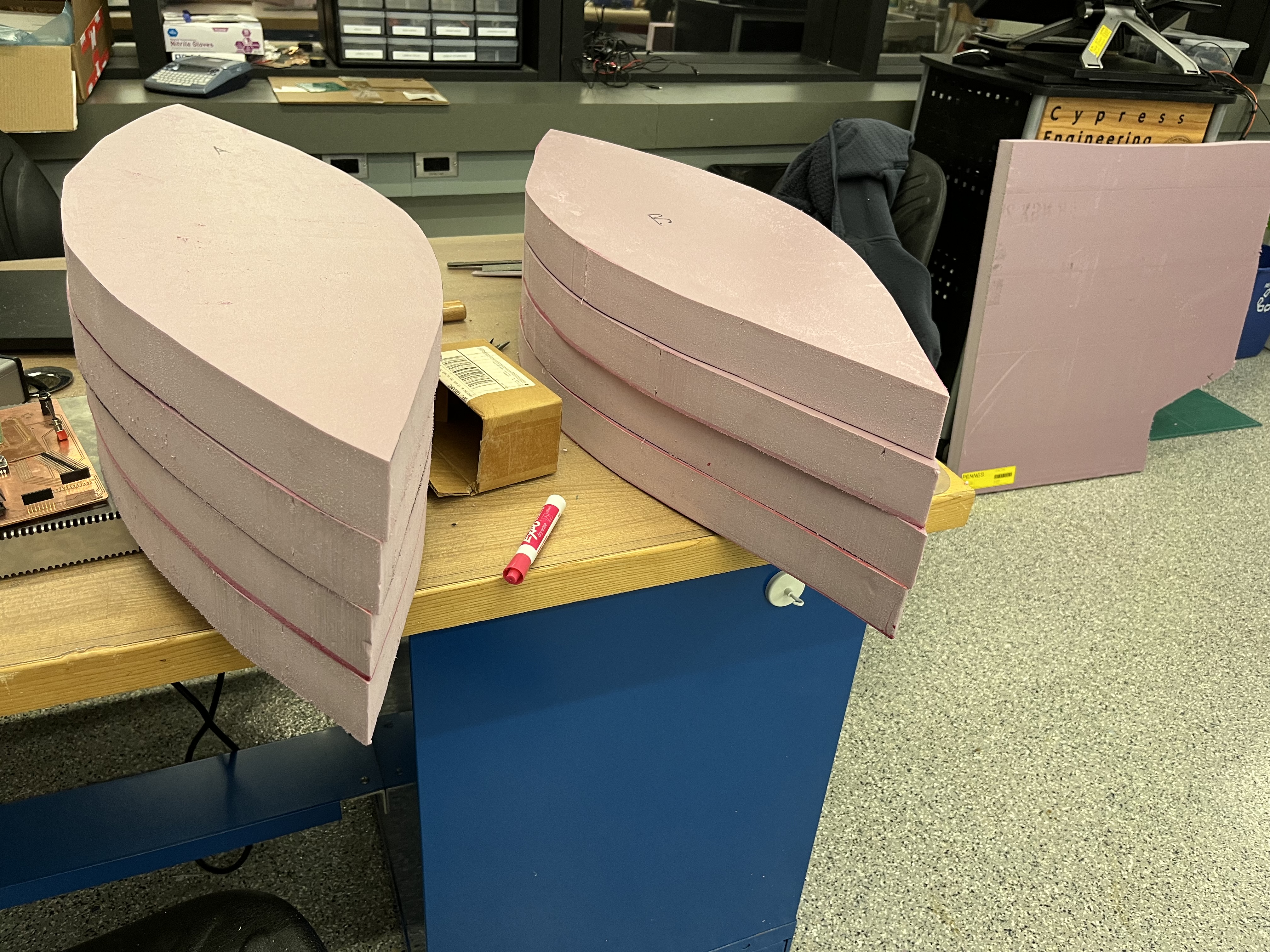
Having said that, the edges were uneven. Alfonso mentioned that from experience, this would make composites very difficulty. I decided to clean up the sides by shaving about 1 - 2 centimeres from boat curvatures of the hull using a bandsaw. The final hull looks a lot better, and is shown below.
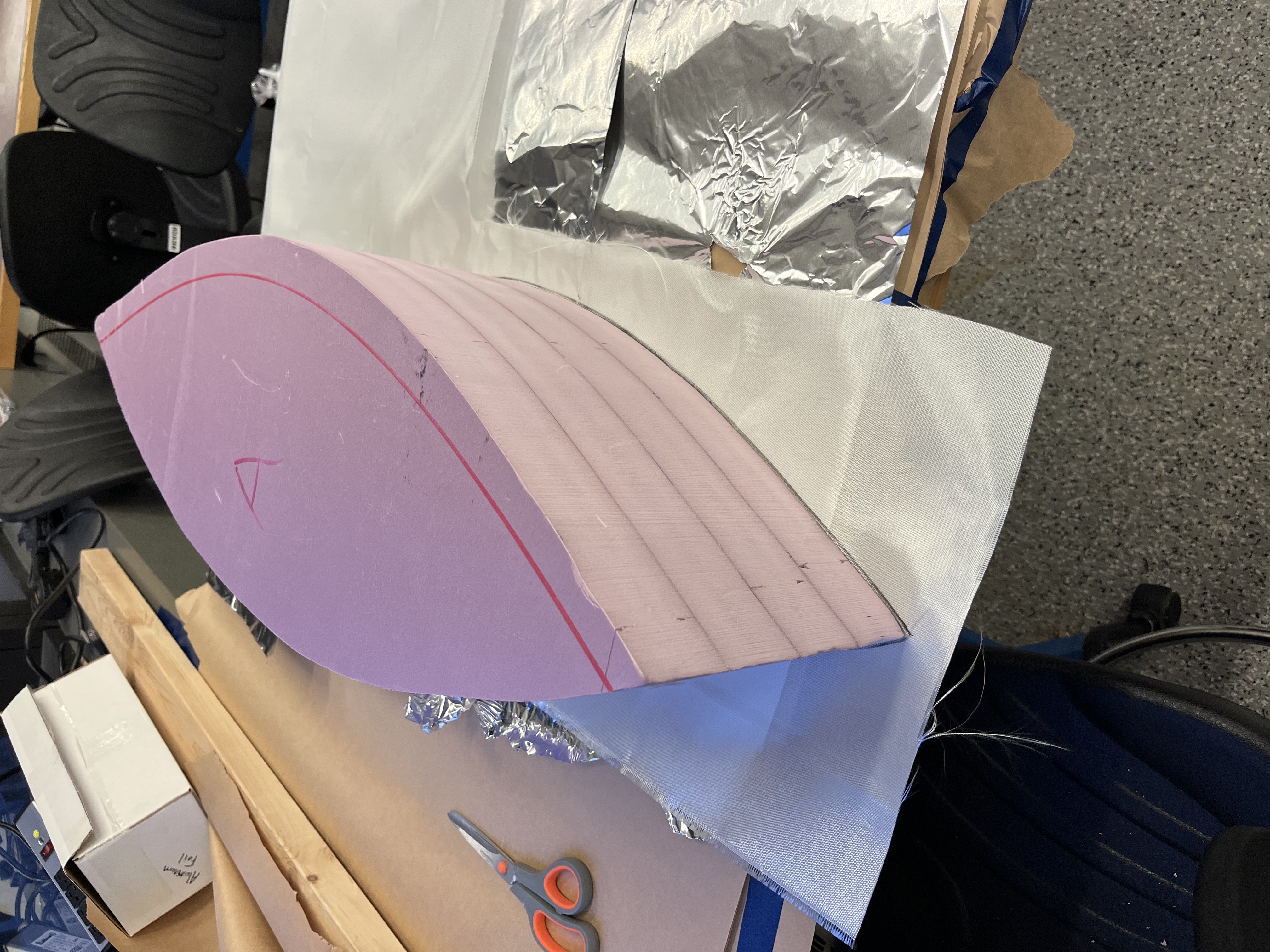
After this, I began on composite building around this as the mold. I cut fiberglass sheets into the appropriate shapes for the 4 faces. I mixed a lot of epoxy + hardener, applied one layer on the foam, added my layer for the face of fiberglass, then added more epoxy resin.
This continued until all sides were complete.

After this, both hulls were placed in vacuum bags, and left to cure over night.

Although not clearly shown outside of the vacuum bag, the hulls were wrapped in red release plastic before they were put in the vacuum bag.
Removing the plastic was extremely difficulty, especially in open air, and took a long time.
One thing that sped it up was my potentially unique idea to do the removal under hot water, which sped up a single hull from about 2.5 hours to 0.8 - 1.0 hours. This is likely since the heat helps mellow any forms of stickiness (which are essentially intermolecular forces being overcome) and makes removal easier. One of the finish hulls is hown below!










